Are you a wine enthusiast seeking the perfect beverage cooler and storage solution for your collection? The choice between a wine fridge vs wine cooler can be challenging, especially when considering the differences in cooling technology, design, and capacity.
In this blog post, we will explore the key distinctions and guide you in making an informed decision for your wine storage needs.
Short Summary
- Wine coolers and fridges offer different features to meet the varying needs of wine storage, such as temperature control, capacity, design and customization.
- When choosing between a wine cooler or fridge for long-term storage considerations should be made regarding cost, space requirements collection size cooling technology zones capacity and noise level.
- In 2023 some of the top models include Kalamera Wine Fridge, 24 inch Built in Wine and Beverage Refrigerator, Ivation 12 Bottle Compressor Wine Fridge W/Lock, and the BODEGA 15 Inch Wine Fridge.
Understanding Wine Coolers
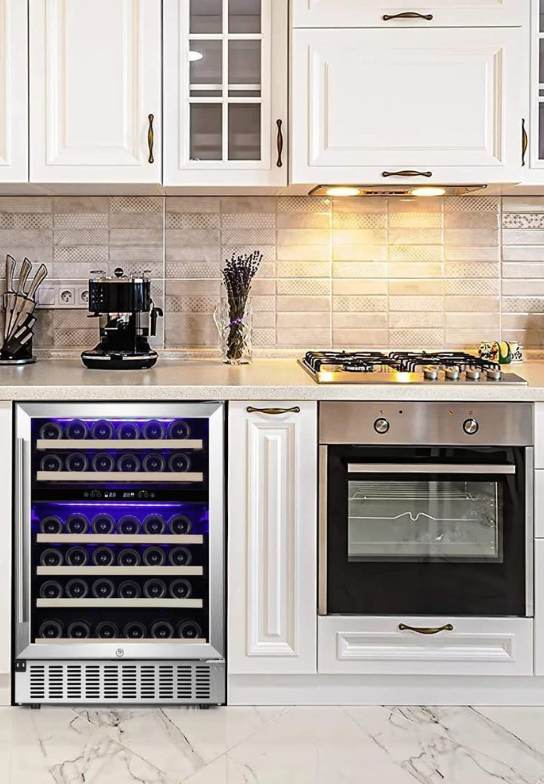
Wine coolers are designed to safeguard your cherished collection from environmental fluctuations while maintaining a consistent temperature. These storage devices come in various sizes and designs to accommodate a range of preferences, from small countertop models to larger units that can hold up to 18 bottles.
Modern wine coolers boast stylish designs, programmable LED lighting, and even Bluetooth connectivity, ensuring your fine wines are not only well-preserved but also displayed in an attractive manner.
While a traditional beverage refrigerator, or beverage center may seem like a viable option for wine storage, it is important to understand that they cannot provide the ideal temperature range of 45°F to 65°F required for chilling wine.
Wine coolers, on the other hand, are specifically designed to store reds, whites, and other bottles of wine at optimal serving temperatures, ensuring your collection remains in prime condition.
Thermoelectric Cooling
One of the primary features of wine coolers is thermoelectric cooling, which offers several advantages over traditional cooling methods. With fewer moving parts, thermoelectric cooling operates quietly, is energy-efficient, and exhibits less vibration, ensuring your wine remains undisturbed and in perfect condition.
This technology is also known for its compact size and long lifespan, making it an attractive option for wine enthusiasts who value both performance and aesthetics.
However, it is important to note that thermoelectric cooling is not without its drawbacks. This technology tends to be more expensive and less power efficient than other cooling methods, such as compressor cooling found in wine fridges.
Despite these disadvantages, thermoelectric cooling remains a viable option for those seeking a quiet, energy-efficient, and aesthetically pleasing wine storage solution.
Capacity and Design
One of the primary differences between wine coolers and wine fridges is their size and capacity. Wine coolers are generally smaller, with a traditional wine cooler having a capacity range of 10 to 18 bottles.
This makes them an ideal choice for those with limited space or smaller collections. Freestanding wine coolers, for example, can be placed anywhere in your home, offering the flexibility of relocation during redecoration or cellar clean-outs.
Built-in or under counter wine coolers, on the other hand, are designed to be integrated into a kitchen's interior or home bar, providing a more seamless appearance.
These units typically come with a tinted glass door to protect your wine from harsh light while still allowing you to display your collection with elegance and style. However, it is worth noting that built-in wine coolers tend to be more expensive than freestanding or countertop models due to the need for custom-building.
Unveiling Wine Fridges
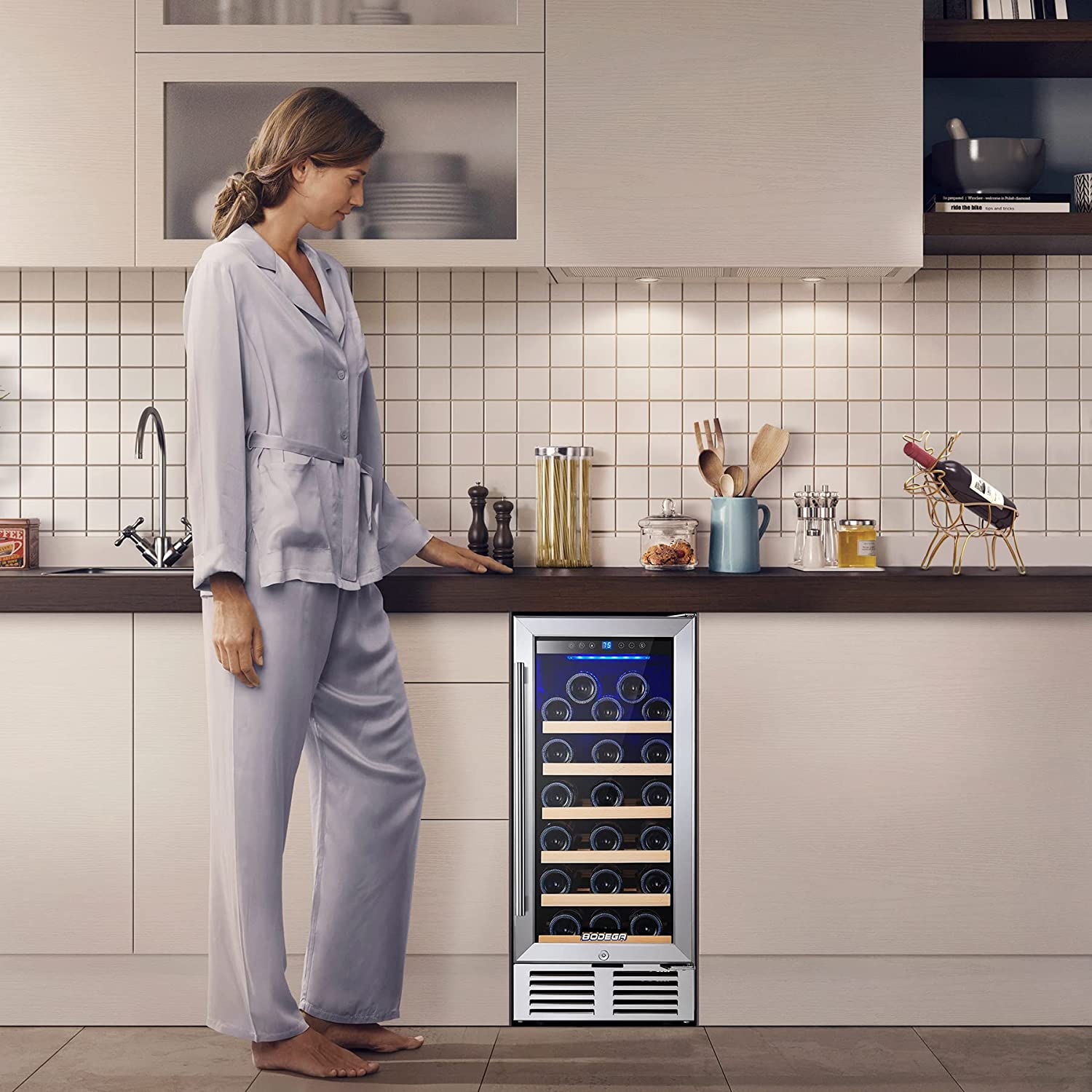
While wine coolers offer a compact and stylish solution for wine storage, wine fridges cater to those with larger collections and a desire for more precise temperature control.
Wine fridges utilize compressor cooling technology and generally have a larger capacity than wine coolers, accommodating up to 46 bottles in some models. These units also boast adjustable shelves and customizable features, allowing you to tailor the storage to your specific needs and preferences.
The use of compressor cooling technology in wine fridges is essential for larger collections, as it allows for a greater capacity and more consistent temperature regulation.
This technology requires air-flow around the sides and back of the cooling unit, to dissipate heat and maintain a stable temperature, making it an ideal choice for serious wine enthusiasts with extensive collections.
Compressor Cooling
Compressor cooling technology offers several benefits for wine storage, particularly for larger collections. Unlike thermoelectric cooling, compressor cooling systems can automatically adjust to external temperature changes, making them suitable for storing wine in either a wine cellar or an uninsulated area.
This robust cooling capacity ensures your wine collection remains in optimal condition, regardless of fluctuations in the surrounding environment.
However, it is important to be aware of the drawbacks associated with compressor cooling. Due to the numerous components required to adjust the internal temperature, compressor wine coolers may produce slight vibrations and noise.
While these factors may be a concern for some, the benefits of precise temperature control and greater storage capacity often outweigh these disadvantages for serious wine collectors.
Size and Customization
As mentioned earlier, wine fridges are generally larger than wine coolers and provide greater storage capacity, with some models accommodating up to 150 bottles of wine.
This makes them an ideal choice for those with expansive collections or for those who plan to grow their collection over time. In addition to their size, wine fridges also offer a variety of customization options, such as adjustable shelves and dedicated wine and beverage sections.
The Kalamera Dual Zone wine refrigerator, for example, has a capacity of 46 bottles and allows you to store both red and white wines at their respective ideal temperatures.
Other models, such as the freestanding black stainless steel refrigerator with French doors and beechwood shelving, provide a sophisticated display for your wine collection while offering customizable features for optimal storage.
With these options available, it is easy to find a wine fridge that suits your specific needs and preferences.
Temperature Zones: Comparing Wine Coolers and Wine Fridges

One of the most significant differences between wine coolers and wine fridges lies in their temperature zones. Single zone coolers maintain all wines at a constant temperature, making them suitable for storing a specific type of wine or for short-term storage.
On the other hand, dual zone wine coolers and multi-zone fridges allow for different temperatures for red and white wines, ensuring each bottle is kept at its optimal serving temperature.
This distinction in temperature control is crucial for wine enthusiasts who wish to store a variety of wines, as reds and whites require different temperature ranges for optimal preservation.
For example, white wines should be stored at a temperature between 46 °F to 56 °F, while red wines require a temperature range of 58 °F to 68 °F. Dual and multi-zone fridges provide the flexibility to accommodate these varying needs within a single unit.
Single Zone
Single zone wine coolers are an economical and straightforward option for those who primarily store one type of wine or require short-term storage. These units maintain a consistent temperature throughout, ensuring your entire collection is kept at the same optimal temperature.
However, their lack of flexibility in temperature control may not be suitable for those who wish to store various types of wine or require more precise temperature regulation.
Despite these limitations, single zone wine coolers can be an ideal choice for those with limited space or smaller collections. Their compact size and simplicity make them an attractive option for wine lovers and enthusiasts who require a basic, cost-effective solution for wine storage.
Dual and Multi-Zone
Dual and multi-zone wine fridges offer greater flexibility and precision in temperature control, making them an ideal choice for those with diverse wine collections.
These units feature separate temperature zones, allowing you to store red and white wines at their respective ideal temperatures within the same fridge. This ensures that each bottle fine wine in your collection is kept at the optimal serving temperature, regardless of its variety.
In addition to their temperature control capabilities, dual and multi-zone fridges also provide the added benefit of customizable storage options, such as adjustable shelving and dedicated wine and beverage sections.
This allows you to tailor your storage to your specific needs, ensuring your collection remains in prime condition and ready for enjoyment at any time.
Longevity and Storage: Which is Better?
When it comes to longevity and storage, wine coolers and wine fridges each have their respective advantages and disadvantages. Wine coolers are suitable for short-term storage, as they typically maintain a single temperature and may not offer the precise temperature control required for long-term preservation.
However, their compact size and stylish design make them an attractive option for those with limited space or smaller collections.
Wine fridges, on the other hand, are better suited for long-term storage due to their larger capacity and precise temperature control. Their compressor cooling technology ensures a more consistent temperature, which is crucial for maintaining the quality of your wine over an extended period.
However, it is important to note that wine fridges can be susceptible to temperature fluctuations caused by frequent opening and closing of the door, which may adversely affect the wine's quality.
Short-Term Storage
Wine coolers, particularly single zone models, are well-suited for short-term storage, as they maintain a consistent temperature throughout the unit. This makes them ideal for storing everyday wines that will be consumed within a few months, as well as for those with limited space to store wine, or smaller collections.
However, their lack of temperature flexibility may not be suitable for those who require more precise temperature control for a diverse range of wines.
It is important to consider your specific needs and preferences when selecting a wine cooler for short-term storage. Factors such as the size of your collection, the types of the wine bottles you typically store, and the available space in your home will all influence your decision.
Long-Term Storage
Wine fridges are the preferred option for long-term storage due to their greater capacity and precise temperature and humidity control. This ensures your wine collection remains in optimal condition over an extended period, allowing the flavors to develop and mature as intended.
In addition to temperature control, maintaining proper humidity levels is crucial for long-term wine storage, as high humidity prevents corks from contracting and introducing air into the bottles.
Despite their advantages, wine fridges do come with some risks, such as potential breakdowns and power outages that can threaten the security of your collection. As a result, it is essential to consider factors such as backup power and proper ventilation when selecting a wine fridge for long-term storage.
Factors to Consider When Choosing Between a Wine Cooler and Wine Fridge
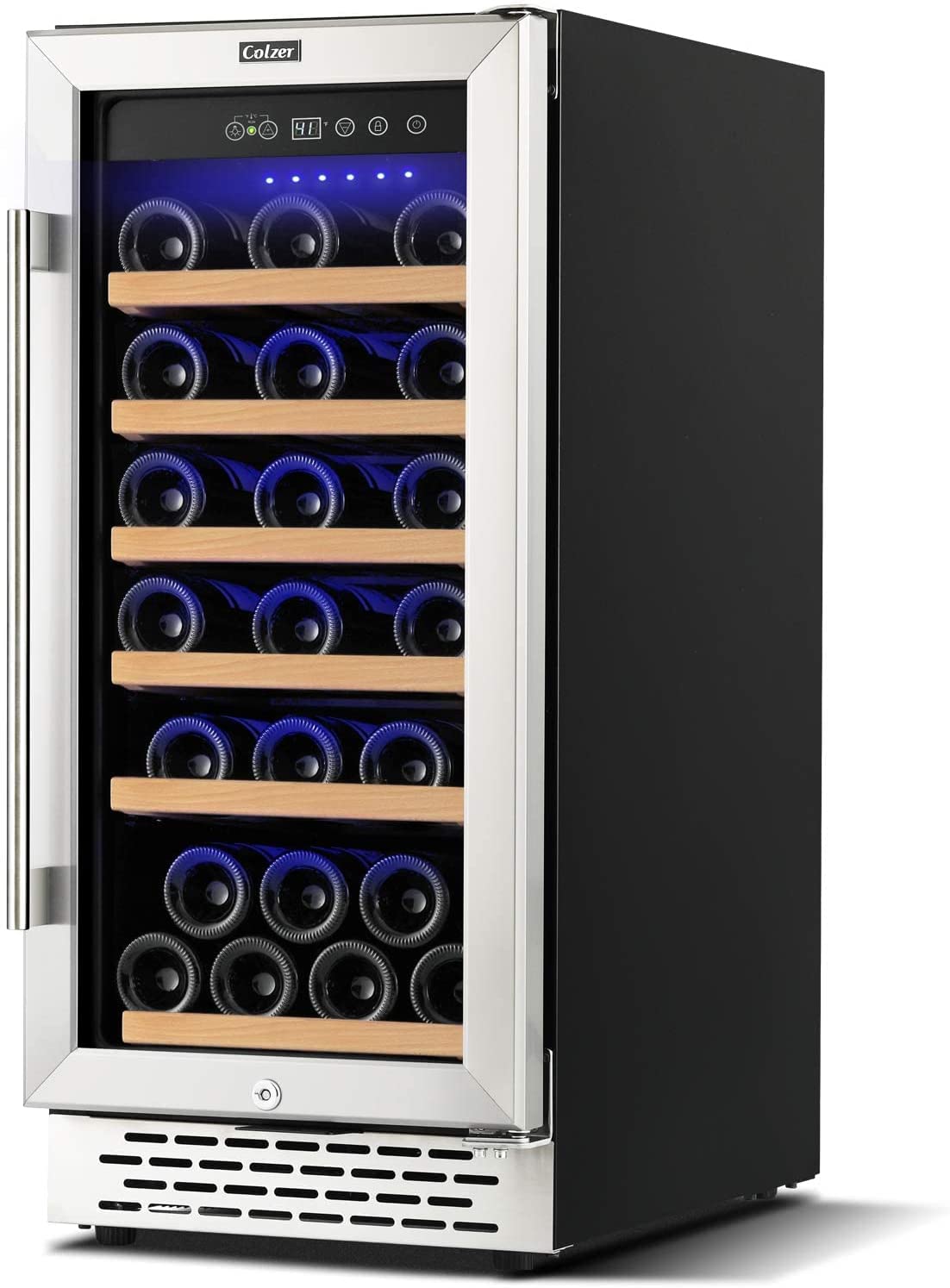
When selecting between a wine cooler and a wine fridge, it is essential to consider factors such as budget, space requirements, and collection size. The budget for a wine cooler or wine fridge will depend on the size of your collection, the type of cooling technology employed, the number of cooling zones, capacity, and noise level.
Assessing your available space is also crucial, as wine coolers and wine fridges come in various sizes and designs, with some models requiring dedicated space for installation.
Considering the size of your collection is another important factor when choosing between a wine cooler and a wine fridge.
Wine coolers, with their smaller capacity, may be suitable for those with smaller collections or limited space, whereas wine fridges, with their greater capacity and precise temperature control, may be more appropriate for those with larger collections or plans to expand their collection over time.
Budget
The cost of a wine cooler or wine fridge will vary depending on factors such as size, features, and bottle capacity, with wine coolers typically being more economical than wine fridges.
However, it is important to weigh the initial cost against the benefits of each option, such as temperature control, capacity, and customization options, to ensure you are making the most informed decision for your specific needs and preferences.
When considering a wine cooler or wine fridge, it is important to consider the cost, features, and bottle capacity. Wine coolers are typically more economical than wine fridges, but it is important to weigh the initial cost against the benefits of each option. Temperature control, etc.
Space Requirements
When choosing between a wine cooler and a wine fridge, it is important to consider the available space in your home. Wine coolers and wine fridges come in various sizes and designs, with some models requiring dedicated space for installation.
It is suggested to leave a clearance of 10 cm around the wine fridge and an additional 30 cm of space above it for optimal performance. Assessing your available space and considering the size and design of each option will help you make the most informed decision for your wine storage needs.
Collection Size

The size of your wine collection is another crucial factor when deciding between a wine cooler and a wine fridge. Wine coolers typically accommodate between 40 to 100+ bottles of wine, whereas wine fridges can store up to 150 bottles in some models.
Considering your current collection size, as well as your plans for future expansion, will help you determine which option is most suitable for your wine storage needs.
Top Brands and Models
In 2023, some of the top wine cooler brands and wine fridge brands and models include the Kalamera Wine Fridge, 24 inch Built in Wine and Beverage Refrigerator, Ivation 12 Bottle Compressor Wine Fridge W/Lock, and the BODEGA 15 Inch Wine Fridge.
These models offer a variety of features and benefits, such as dual temperature zones, digital displays, and stainless steel exteriors, ensuring your wine collection is not only well-preserved but also elegantly displayed.
With these top brands and models available, it is easier than ever to find the perfect wine storage solution to suit your specific needs and preferences.
👉 Related Reads: How Cold Does a Wine Fridge Get, White Wine Temperature, Dual Zone vs Single Zone Wine Cooler, Red Wine Temperature, Wine Fridge Temperature, How to Drink Wine, How to Tell if Wine is Bad, How to Serve Wine Properly, How to Decant Wine, Storing Wine at Home, How to Choose a Wine Fridge
Summary
In conclusion, the choice between a wine cooler and a wine fridge largely depends on factors such as budget, space requirements, and collection size.
Wine coolers offer a compact, stylish, and cost-effective solution for short-term storage and smaller collections, while wine fridges provide greater capacity and precise temperature control for long-term storage and larger collections.
By considering these factors and exploring the top brands and models available in 2023, you can make an informed decision when selecting the perfect wine storage solution for your cherished collection.
If you are looking for a wine fridge then you may want to read our blog post where we review The Best Wine Fridges.
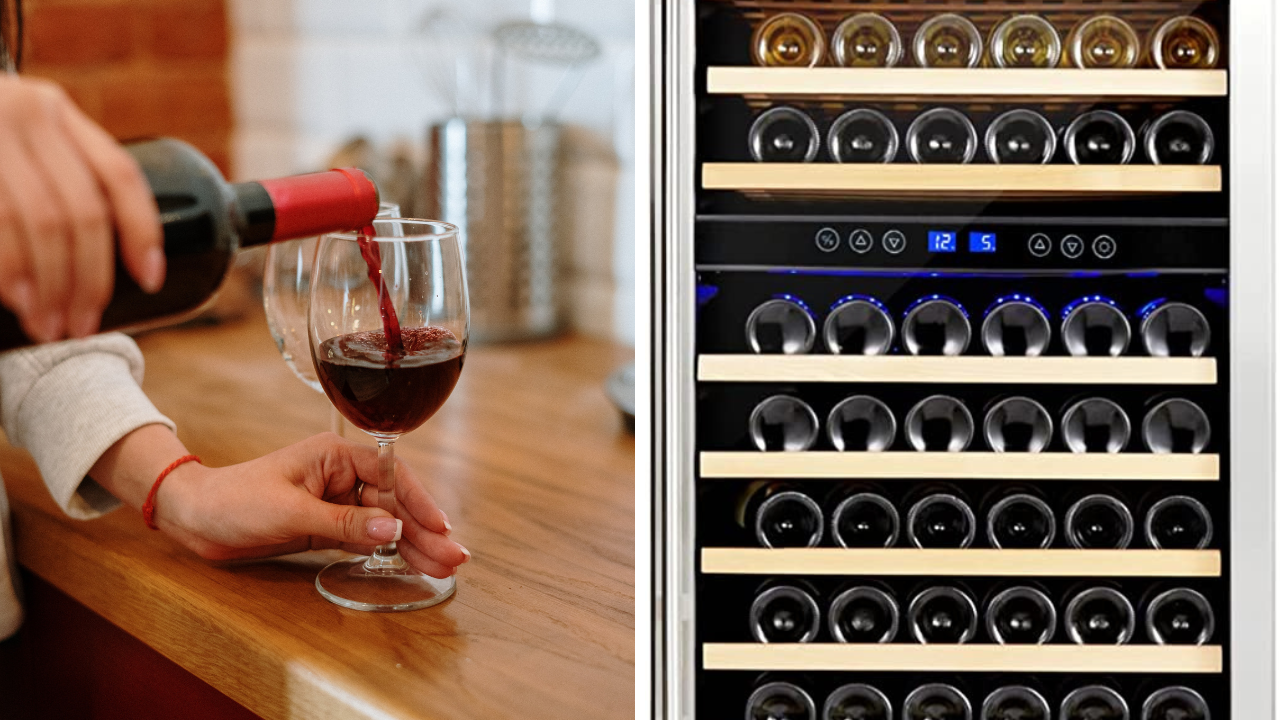
If you are tight on space, then check out our article on the Best Slim Wine Fridges.
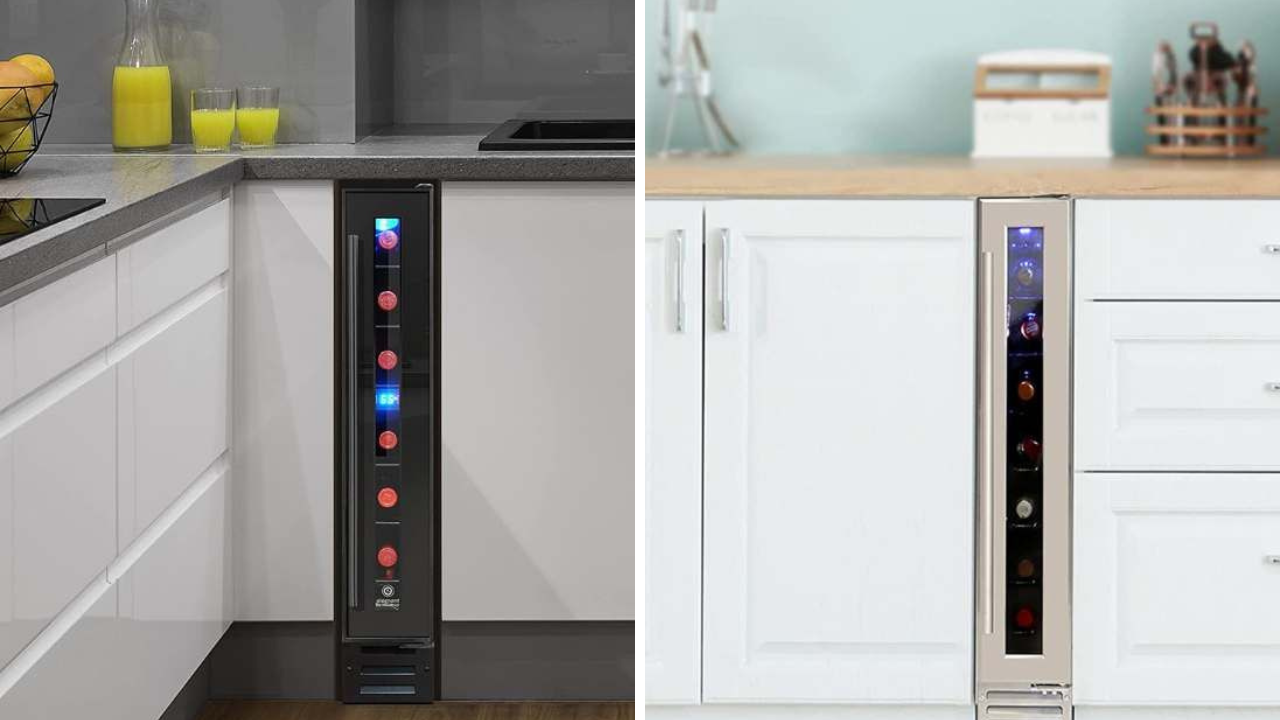
You may also want to read our top picks for the best under counter wine cooler.
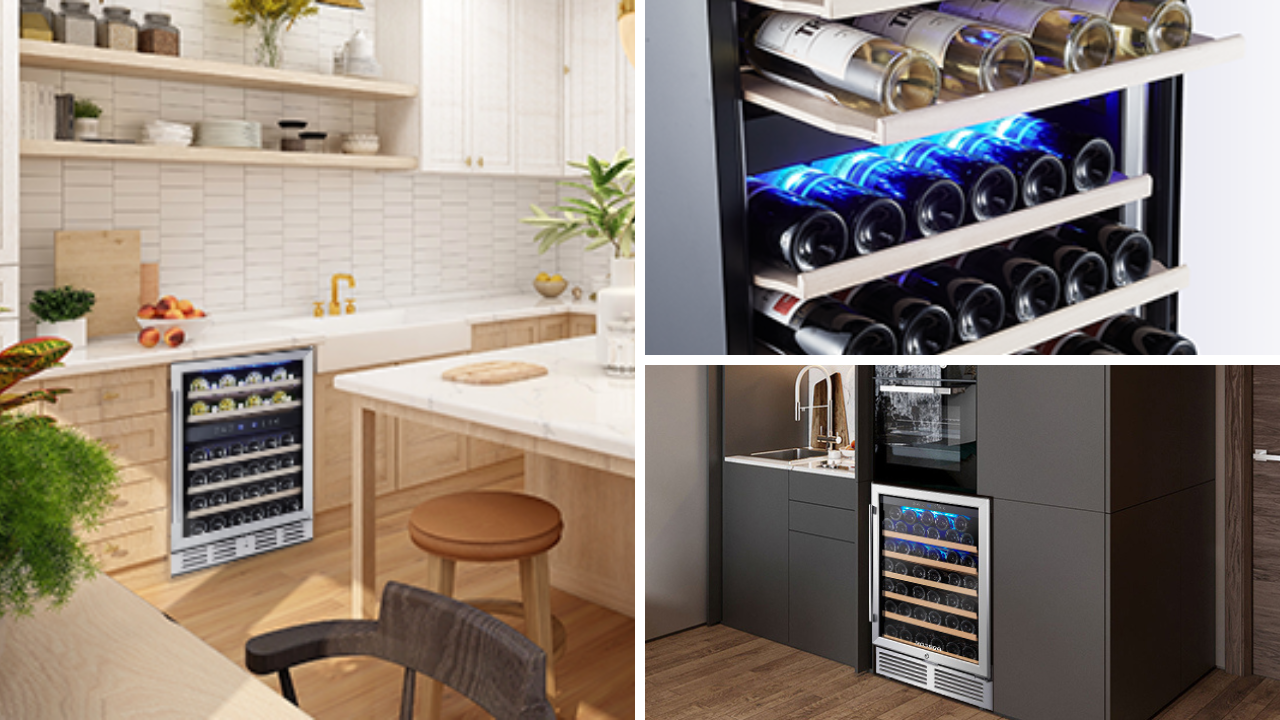
Frequently Asked Questions
What is the difference between wine cooler and wine fridge?
The key difference between a wine cooler and a wine refrigerator is temperature precision. Wine coolers are designed to be set to a precise temperature, allowing users to control the environment of their collection.
Wine fridges have limited temperature settings and depend on the ambient air temperature.
Why use wine cooler instead of fridge?
Wine coolers provide a more consistent environment than standard refrigerator for storing wine, which helps keep it at its best. Since the temperature is kept lower than regular fridge temperatures, they help preserve the flavours and aromas of wine. This makes them an ideal choice for protecting your collection and enjoying each bottle to its fullest potential.
What's the difference between a cooler and a fridge?
The main difference between a cooler and a fridge is that a cooler uses ice or other cold packs to keep items cool while a refrigerator uses compressor technology for cooling. Coolers are typically used when traveling or spending time outdoors, while refrigerators are found in the home or workplace.
Is there a difference between a wine cooler and a mini fridge?
A wine cooler and a mini fridge are not the same. A wine cooler offers a lower temperature range than a refrigerator, creating an ideal environment to store wines.
Mini fridges provide a wider temperature range than wine coolers and are generally used to store beverages and snacks. Therefore, the two serve different functions.










